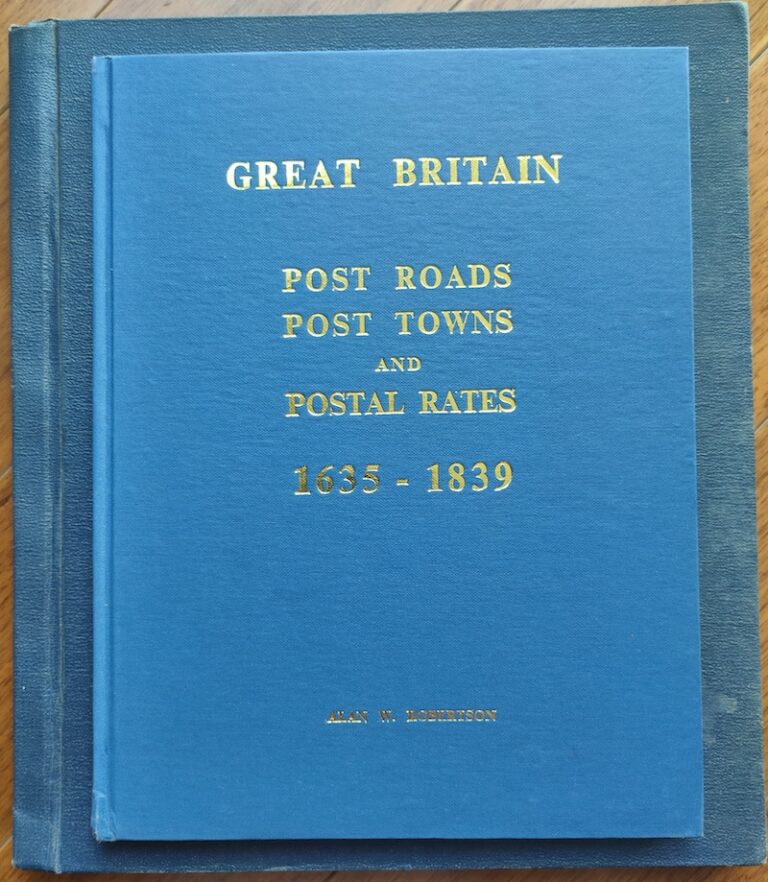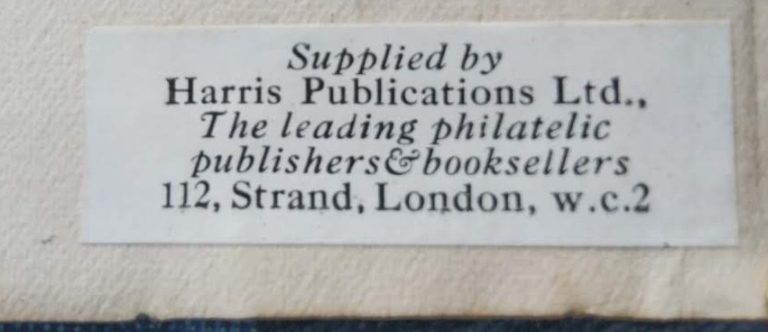This article was republished, with some modifications, as “The Calumnies of Samuel Singer, Charles Phillips, and Stanley Gibbons” Philatelic Literature Review 71 no. 4 Whole no. 277 (Fourth Quarter 2022). Philatelic Literature Review is the journal of the American Philatelic Research Library.
Some years ago, while leafing through the auction catalogue of the George T. Turner Philatelic Library which was held in May 1981, I came across lot 3265 which was listed under the heading CURIOUSA. Its description read:
SINGER, S. The People with the Calumny, 1908, one of the rarest philatelic pamphlets, details Singer’s and C.J. Phillips dispute, we know of only one other copy in private hands, of the highest rarity, ex Ricketts (T)
The ‘T’ in brackets indicates that the book was from Turner’s collection and came with his bookplate. Estimated at $250, the lot realised $180. Emphasis in bold is per the description.
Honestly, I did not know the word ‘calumny’ as one does not come across it often in contemporary English. The dictionary defines it as:
noun: calumny; plural noun: calumnies
the making of false and defamatory statements about someone in order to damage their reputation; slander.verb: calumny
slander (someone).
Intrigued by its description, I decided to keep a look out for this 40 page paperbound book (booklet rather) – Calumny. In mid-2020, during the first Covid-19 wave (I guess we will all recollect these years in terms of the first, second, …, nth wave!), I was able to buy a copy from philatelic literature dealer HH Sales (Figure 1).

Samuel Singer
Samuel Singer (Figure 2) started his career a geographical engineer connected with the Brussels National Institute in Geography. After five years on the job, he moved to Paris in 1888. During the Paris Exhibition in 1889, he quit geography for philately and established his stamp business. From then until 1905, he conducted his trade of stamp repairer and dealer from 58 Rue de Chateaudun and 13 Rue des Martyrs; he operated from the latter address for about two years only. He is known to have used his skills in many different ways – taking two or more damaged copies to make a single sound, adding perforations and overprints, and broadening margins – for his clients. One of whom was Stanley Gibbons, Limited (SG) of London.
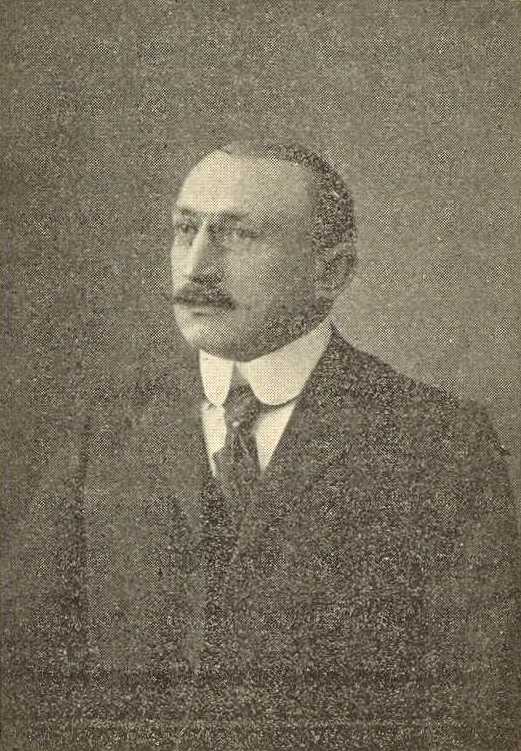
In September 1905, Singer left for New York where he established himself in his old activity. He first operated from 124 East 86th Street and later 128 East 23rd Street. In 1906, he edited a small booklet – Collections and Collectors – which reprinted a letter that Charles Theodore Leroy (1844-1895), a French publicist and art critic, had written which was published in Europe Artiste magazine of May 1895. In the latter pages, Singer advertised his work and claimed that he had “reached a degree of perfection” which could never be attained by any of his contemporaries. He further said that he had received hundreds of congratulatory letters from some of the greatest philatelists of the world in whose collections some of his repaired stamps lay. He also said that over the years he had repaired some five million Francs (one million dollars) worth of stamps. Finally, coming to business, he offered (repaired) stamps at 60-80 percent rebate to catalogue value and expressed his readiness to buy rare stamps, even damaged ones, for cash.
Writing in 1949, the well-known columnist, George B. Sloane (Figure 3), said that he had cultivated Singer’s acquaintance, who he described as an “enterprising predatory rogue.” Sloane mentions that Singer’s workbench resembled the type customarily used by watchmakers though in the latter years his skills had deteriorated and his works become quite inferior. However, his earlier repairs were so fine that in later years, with fading eyesight, he often bought back, without recognition, many “very fine” copies of old Europeans which he had worked on many years before! It was then he started using a small “M” in a circle handstamp to indicate to him, “Mended”, so that he would not get stuck with his repair work later. He frequently travelled to Europe to sell beautiful-looking triangular Capes, early Roumanians, Swiss, French, Oldenburgs, and other German states with exceptional margins and all-round excellence to unwary collectors who would be “ambushed by these masquerading philatelic cast-offs.” Sloane felt that Singer’s “attitude toward philately and all those who made a study of stamps was one of utter add absolute contempt.”
Singer died in Italy on 25 December 1927 while travelling there with his wife. He was 68 years old.
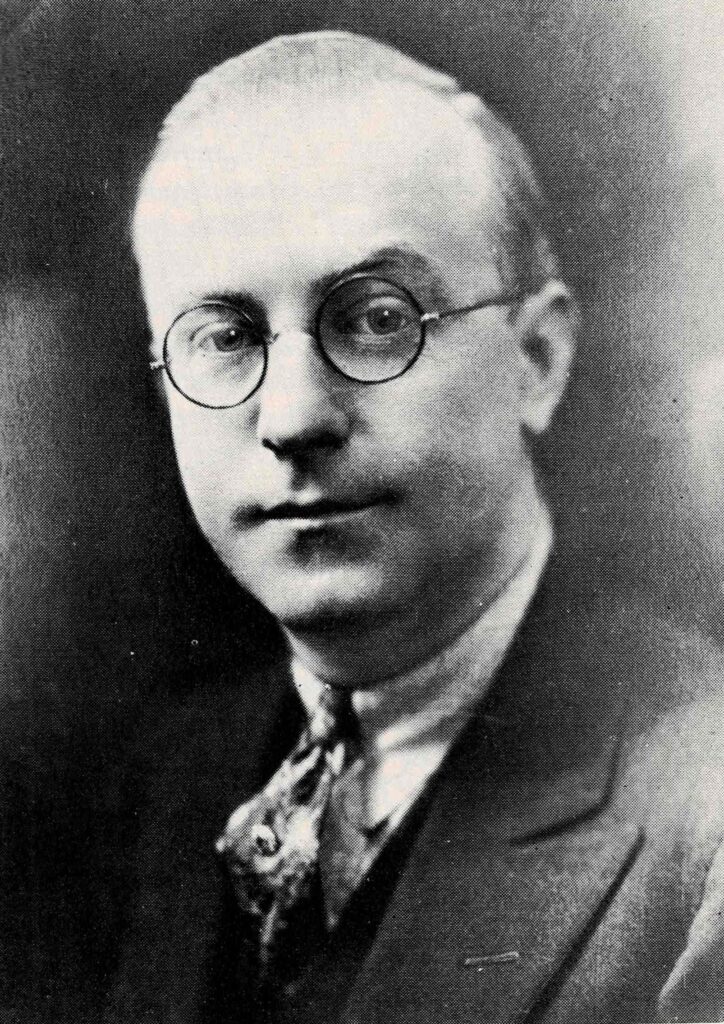
The clash of the fakers
In a letter dated 20 October 1904 (which could well be in the Gibbons archives today), Singer apparently wrote to SG stating that he held 39 letters that he had received from the firm over the last 10 years which talk about the latter sending various stamps to him for repair. He stated that publication of these letters could cause a great deal of harm to SG and he would hold the letters for eight days after which he was free to make use of them as he deemed fit.

C. J. Phillips (Figure 4), the head of SG and editor of Stanley Gibbons Monthly Journal (SGMJ) considered this plain and simple blackmail and decided to fight fire with fire. He published the letter in the ‘Notes and News’ column of the 31 October 1904 issue of SGMJ (Figure 5). He also stated there that he has written to the Chief of Police at Paris to take “necessary steps.”

Singer must have been outraged with this but he did nothing claiming in Calumny that “…for a whole year, I vainly expected to be summoned before the Courts on the complaint of the firm of Stanley Gibbons.” He moved to the US a year later probably to make a fresh start. When he heard rumours that his leaving Paris was in order to avoid an arrest (possibly spread by SG and/or its friends), Singer wrote to the Prefect of Police at Paris asking if they were looking for him; he got a response dated 10 January 1906 that they were not.
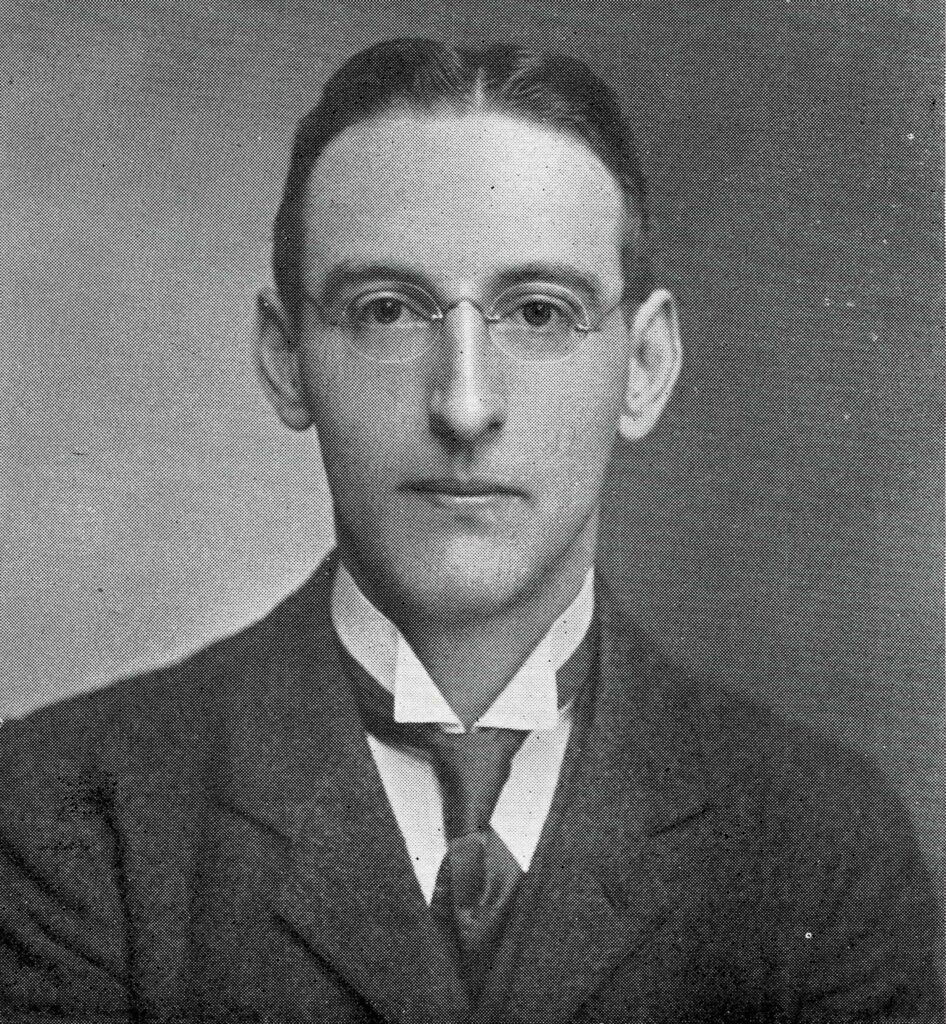
Making a living in the US, Singer may have well forgotten the episode but clearly SG had not. The issue flared up again after three years in 1908 when Eustace B. Power (Figure 6), manager of SG’s New York branch, wrote to the editor of Mekeel’s Weekly Stamp News asking them to reprint Phillips’ condemnation from 1904; this appeared in the 23 May 1908 issue.
This reprint riled Singer so much that he decided to sue SG. Further, he brought out the Calumny booklet condemning the firm, Phillips, and Power as well as exposing some of SG’s shenanigans. In it, he reprinted 22 of SG’s letters sent to him over a three-year period from 1894-97. These letters show that contrary to Phillips’ claim of some 20 stamps (see Figure 5), Singer repaired for SG some 150 of them valued at $10-12,000. And these 22 letters were “picked out haphazard among hundreds” implying that the Singer-SG connection ran far deeper.
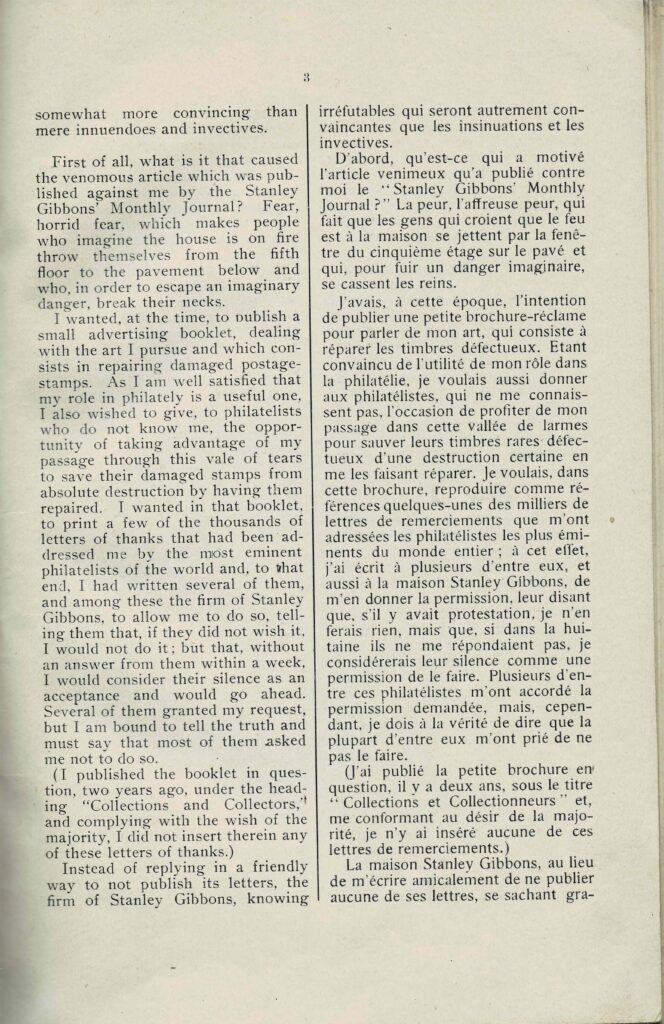
SG does not come out smelling good from the entire episode. Excerpts from a few of the letters are reproduced below:
Stamps are as well repaired as usual. We add also specially a Fidji with a surcharge, double printing, to help you for the repairing of this we enclose two stamps unsurcharged of same issue and which you may use.
We thank you for your est. returning the British Guiana and Canada. They have been perfectly well repaired. The amount asked by you is rather high, but as these stamps are great rarities and you repaired them so well, we will not complain.
We enclose Sandwich Islands 5 and 13, first issue, for special attention; these stamps are especially rare and you will doubtlessly attend to them. Do so very carefully and with all possible attention.
If you repair some of these stamps this week, will you give them to Mr. Astruc or take them yourself to the Exchange Sunday, where Mr. Phillips probably will be, as he is leaving for Paris next Saturday.
We shall feel much obliged if you can give your special attention to the 1d. Cape Wood-block, error, unused, and to the Canada 12d. and return these two as soon as possible, without awaiting the rest, as we need these most particularly.
After reading the letters, I wonder how many of the world rarities existing today have had Singer’s hands work their magic on them?

The libel action was settled out of court and the settlement reportedly included Singer’s legal expenses, reimbursement for the cost of publishing Calumny, and a retraction of the article reprinted by Mekeel’s. The retraction stated that Singer was a very fine gentleman and an expert at his work.
Alvin Good, long-time philatelic secretary to the great American collector, George H. Worthington, who had had to return many repaired items that Worthington had purchased from Phillips over the years, wrote in The Life and Adventures of a Philatelist,
I always regretted that the trial did not proceed for it would have been a circus to hear those two fakers tell on each other on the witness stand.
Curiously, one of the “fakers” was elected to the Roll of Distinguished Philatelists (RDP) in 1921.
Rarity of Calumny
A bibliography of the booklet is given as under:
Singer, S[amuel]. The People with the Calumny. New York: The Author, 1908
40 pp. 233 x 152 mm (inside pages). Originally issued in Grey Paper Covers. Text in English and French.
With respect to its rarity, a search of the Global Philatelic Library website shows nine copies in various philatelic libraries. WorldCat does not show it in any other general library. More than two may be found in private hands though; for instance, Brian Birch’s and Stanley M. Bierman’s library listing shows that they own one each (Bierman’s copy may have been sold by now). If I were to guess, I would think that perhaps about 15 copies exist in all.
In a 1989 article, the prolific American writer (and dealer), Herman Herst Jr. said that he had not seen a copy for 25 years. Herst also claims that Singer made “several printings” which he distributed through stamp dealers. However, those indicted in the booklet purchased as many copies as were available so that the work never reached the philatelic public. This may be another major reason for its scarcity.
Finally, the reader need not fret at not being able to read what Bierman described as a “gem”. A scan of the entire booklet can be downloaded from the digitised Crawford Library held at the British Library. It definitely makes for interesting reading.
References
- Bierman, Stanley M. A List of Handbooks, Periodicals, and Auction Catalogues in the Bierman Philatelic Library. 2nd Revised ed. Los Angles: The Author, 1993
- Birch, Brian J. The Philatelic Bibliophile’s Companion. Montignac Toupinerie: The Author, 2018
- Herst Jr., Herman. “When the Stamp Market Went Dry, this Faker Turned to Blackmail.” The American Philatelist. 103 no. 4 (April 1989): 323-324
- Singer, S (ed). Collections and Collectors from Charles Leroy. New York: The Editor, n.d.
- Sloane, George B. Sloane’s Column: A Compilation of the Subjects Arranged by George T. Turner. West Somerville, Massachusetts: Bureau Issues Association, Inc, 1961, pg. 134
- Tyler, Varro E. Philatelic Forgers: Their Lives and Works. 2nd ed. Sidney, Ohio: Linn’s Stamp News, 1991




